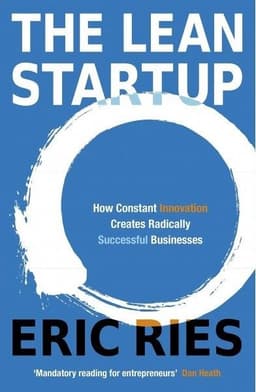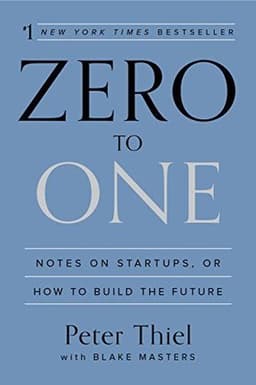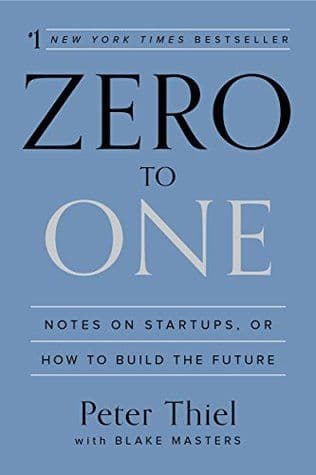
The Lean Startup Book Summary
Book by Eric Ries
Summary
The Lean Startup offers a scientific approach to creating and managing startups and getting a desired product to customers' hands faster, based on validated learning, rapid experimentation, and counterintuitive practices that shorten product development cycles, measure actual progress, and learn what customers really want.
Sign in to rate
Average Rating: 5
1. Vision
Entrepreneurship is Management
Contrary to popular belief, a startup is not just about developing a product, coming up with a brilliant idea, or being in the right place at the right time. A startup is a human institution designed to create a new product or service under extreme uncertainty. This means entrepreneurs are everywhere, in companies big and small. Entrepreneurship requires a managerial discipline geared towards handling extreme uncertainty.
Section: 1, Chapter: 1
Validate Learning is the Measure of Progress
Startups exist to learn how to build a sustainable business, not just to make stuff, make money or serve customers. This learning can be validated scientifically by running frequent experiments. The Lean Startup model is built on 5 key principles:
- Entrepreneurs are everywhere
- Entrepreneurship is management
- Validated learning
- Build-Measure-Learn feedback loop
- Innovation accounting
Progress in a startup should be measured through validated learning - demonstrated by positive improvements in the startup's key metrics.
Section: 1, Chapter: 1
Learning to See Waste
"Learning to see waste and then systematically eliminate it has allowed lean companies such as Toyota to dominate entire industries."
Section: 1, Chapter: 1
Vision Leads to Steering
At the core of the Lean Startup model is the Build-Measure-Learn feedback loop. The process goes as follows:
- Build a minimum viable product (MVP) to test fundamental hypotheses
- Measure how customers respond using actionable metrics
- Learn whether to pivot or persevere based on feedback
This cycle of turning ideas into products, measuring customer response, and learning whether to pivot or persevere is at the heart of the Lean Startup model.
Section: 1, Chapter: 2
Defining a Startup's Vision
Entrepreneurs' visions usually consist of:
- A startup's vision: an overall idea of the change they want to see in the world
- A startup's strategy: the path the company will take to achieve that vision, often by identifying a target market, a business model, a product road map, partners, and competitors
- A startup's product: the end result of the strategy
Startups employ a strategy that takes the initial vision as a given and proceeds to figure out how to achieve it. But too often, startups develop a strategy based on assumptions that haven't been validated.
Section: 1, Chapter: 2
Value vs Waste
In manufacturing, value is providing benefit to the customer; anything else is waste. But in a startup, who the customer is and what they might find valuable are unknown, part of the uncertainty of a new venture.
Ries came to realize they needed a new definition of value: The real progress they made was the discovery of what creates value for customers. Anything they did that did not contribute to their learning was a form of waste. Could they have learned the same things with less effort? The answer is yes. Unnecessary features, chasing the wrong metrics, delays in getting feedback from customers - all these are waste.
Section: 1, Chapter: 3
The Audacity of Zero
Metrics and numbers matter, but startups often put too much value into "vanity metrics" and grossing up their numbers for PR and investor purposes. But if a startup is not making progress, small numbers actually tell a more accurate story. Be honest about your numbers from the start, even if they're small. Vanity metrics let startups form false conclusions.
Decide what metrics actually matter for your business, track and be accountable to them. Too much focus on vanity metrics prevents startups from pivoting when necessary due to fear of accepting "lesser" numbers.
Section: 1, Chapter: 3
Experiment Quickly to Test Assumptions
The Lean Startup method treats each new product or feature as an experiment designed to test a vision. It follows the scientific method:
- Start with a clear hypothesis that makes predictions about what is supposed to happen
- Design an experiment to test those predictions
- Get out of the building to test those assumptions with real potential customers
- Analyze the results and decide what to do next based on validated learning rather than vanity metrics
Build an MVP based on the smallest set of features needed to rigorously validate your assumptions and start the Build-Measure-Learn feedback loop quickly.
Section: 1, Chapter: 4
MVP Examples: Dropbox and Food on the Table
Two case studies demonstrate effective use of MVPs:
- Dropbox used a video to test demand for its file syncing service without actually building the product. The explainer video demonstrated the intended functionality and generated massive interest on Hacker News. This validated Dropbox's leap-of-faith assumption that customers wanted their product.
- Food on the Table spent months testing different MVP approaches from selling prepared ingredients to PDFs of recipes. They iterated rapidly to find a combination of features that customers would actually pay for before investing heavily. Their final product was a subscription service providing weekly meal plans and grocery lists.
Section: 1, Chapter: 4
2. Steer
Leap of Faith Assumptions
Every business plan begins with assumptions. Startups make "leap-of-faith" assumptions - the riskiest elements upon which their success depends. Two most important assumptions are:
- Value hypothesis: The belief that the product delivers value to customers once they start using it
- Growth hypothesis: The belief that customers will love the product enough to fuel exponential growth
An example is Facebook. Their value hypothesis was that connecting online with one's real-world friends has inherent value. Their growth hypothesis was that users would be fanatical enough to rapidly recruit more users.
Section: 2, Chapter: 5
Genchi Gembutsu - "Go and See for Yourself"
The Toyota Production System has a key principle called "genchi gembutsu" - "go and see for yourself." It emphasizes the importance of making decisions and taking action based on firsthand experience, not the reports of others. Managers should see operations for themselves to truly grasp problems and opportunities. Entrepreneurs need to get out of the building and directly interact with customers to test their assumptions. When managers go and see for themselves, they often realize their beliefs about their customers are wrong. Speaking directly to customers reveals insights that no amount of surveys and focus groups can.
Section: 2, Chapter: 5
Early Adopters: The Foundation of Learning
Early adopters are a special breed of customer. They accept an 80% solution and are eager to give feedback. Early adopters use their imagination to fill in what a product is missing because they see its potential.
When cultivating early adopters, focus your marketing efforts on places they congregate, use messaging that resonates with their beliefs, and speak to their needs. Don't try to appeal to the broader mainstream yet.
Early adopters are tolerant of a product's flaws and their feedback is invaluable for steering the product roadmap. Find them, cherish them, and shape your product to meet their needs.
Section: 2, Chapter: 6
Remove Features That Don't Contribute to Learning
In building an MVP, any feature, process or effort that does not contribute directly to the learning you seek should be removed. Even a "low-quality" MVP can facilitate valuable learning. When in doubt, simplify. Cut out features and focus solely on what you need to learn.
Resist the temptation to overload your MVP with features you think it needs. Your job is to find the simplest thing you can build that will facilitate the learning you seek. Order MVP features based on how much validated learning they will get you, not on how "important" you think they are.
Section: 2, Chapter: 6
Innovation Accouning Requires Three A's
Traditional accounting judges new ventures on the same metrics as established companies. But those metrics don't accurately predict a startup's future prospects.
Innovation accounting requires a new kind of metrics, ones that are:
- Actionable - Metrics must demonstrate clear cause and effect. When a startup makes a change, it needs to be able to measure the results.
- Accessible - Reports should be simple enough for everyone to understand and use actionable metrics.
- Auditable - Data should be credible to employees. It needs to reflect reality. Metrics should report on real progress, not vanity. Need to audit metrics to ensure they're tied to the real world.
Section: 2, Chapter: 7
Vanity Metrics vs Actionable Metrics
Vanity metrics are dangerous because they give a rosy picture of the business, even if no real progress is being made. Examples include total registered users, raw pageviews, and number of downloads. These metrics tend to go "up and to the right" regardless of the actual business performance.
Actionable metrics, on the other hand, clearly demonstrate cause and effect. They focus on the parts of the product customers interact with and tie them to business results. If a change is made to the product, an actionable metric will immediately reflect any positive or negative impact. Actionable metrics are the foundation for learning what's working and what's not.
Section: 2, Chapter: 7
When to Pivot?
Startups with successful products eventually see their early metrics go flat. That's because they've exhausted their early adopters and now need the product to appeal to mainstream customers. Be guided by your actionable metrics and innovation accounting. If, despite numerous attempts at tuning your engine of growth, your metrics are showing slow growth, that may be a sign to pivot.
Don't be afraid to honestly evaluate if your original strategic hypotheses have been disproven. Changing course is not a sign of failure if the data supports it. Better to pivot based on validated learning than to blindly stay the course.
Section: 2, Chapter: 8
A Startup's Runway = Number of Remaining Pivots
"A startup's runway is the number of pivots it can still make."
Entrepreneurs often speak of runway - the amount of time until a startup runs out of money. But Ries argues that the real definition of runway is the number of opportunities a startup has left to pivot. It's the number of times a startup can make a major change to its business strategy. A startup can extend its runway two ways:
- By reducing costs or raising additional funds to add more time
- By pivoting faster to find a sustainable business model sooner The goal is to find ways to achieve the same amount of validated learning at lower cost or in a shorter time. Ries argues pivots are a more useful measure of runway than financials.
Section: 2, Chapter: 8
3. Accelerate
Small Batches Yield Big Benefits
Working in smaller batches has surprising benefits. Imagine two projects:
- Project A delivers 100 units all at once at the end of 4 weeks
- Project B delivers 1 unit every day and finishes 100 units in 4 weeks
Both take 4 weeks and deliver 100 units, but Project B has significant advantages:
- You get value from Project B from Day 1 vs waiting 4 weeks
- If a design flaw is discovered, Project B loses 1 unit, Project A loses 100
- Project B gets customer feedback 100 times faster than Project A
The ideal goal is to achieve small batches all the way down to single-piece flow along the entire supply chain.
Section: 3, Chapter: 9
"Pull, Don't Push"
Traditional mass production systems use a "push" model - they produce large batches of products based on forecasts and push them to the next stage of the supply chain. Toyota revolutionized this by using a "pull" model - each step only produced what the next step needed and "pulled" materials as needed.
The same concept can apply in startups. Instead of building massive features and pushing them to customers, Lean Startups need to let their experiments and validated learning "pull" work from product development based on what needs to be learned next. Essentially, avoid large batch development and only build what is needed to test the next assumption. Any other work is waste.
Section: 3, Chapter: 9
Types of Engines of Growth
There are three primary engines of growth that power startups:
- Sticky - Companies with a high customer retention rate. They grow by increasing revenue from existing customers over time. Key metrics are churn rate and customer lifetime value. Example: IMVU.
- Viral - Products that spread rapidly from person to person. Key metric is the viral coefficient - how many new customers each existing customer brings in. Example: Hotmail, which grew its user base extremely rapidly via viral word-of-mouth.
- Paid - Companies that can affordably acquire new customers and get back more revenue than the cost of acquisition. Key metrics are customer acquisition cost and average revenue per user. Example: Direct marketing businesses.
Section: 3, Chapter: 10
Engines of Growth Determine Product Market Fit
The engine of growth a startup uses can act as an early indicator of product/market fit. If a startup can demonstrate that each of the assumptions in its growth model is true, it may have discovered a repeatable, scalable business model.
Before product/market fit, a startup should be focused on learning-based metrics, not growth. Using engines of growth as a guide, a startup can evaluate if it's getting closer to product/market fit as it tunes its engine through experiments. If your metrics are improving consistently, you're making progress. If not, you may need to pivot.
Section: 3, Chapter: 10
Adapt With Root Cause Analysis
The Five Whys is a technique for getting to the root cause when something goes wrong. By asking "why" five times, you can peel back layers to find the human problem at the source. For example:
- Why aren't customers using our new feature? Because they can't find it.
- Why can't they find it? It's only accessible from an obscure screen.
- Why is it only accessible there? Because the senior designer thought it would be better.
- Why did he think that? He wasn't properly briefed on the goals.
- Why wasn't he briefed? Because the PM was busy with other features.
Five Whys helps you build an adaptive organization that fixes processes, not just symptoms.
Section: 3, Chapter: 11
Startups Require Three Structural Attributes
To apply Lean Startup principles in an established company, Ries argues you need to create a platform for experimentation with three key attributes:
- Scarce but secure resources - The startup needs to be assured long-term budgetary security from cancellation but not so much that they become complacent or bloated
- Independent authority - The startup needs complete autonomy to develop and market new products within their limited mandate without excessive approvals
- Personal stake - Teams need to have a personal stake in the outcome, either through bonuses tied to success or a strong sense of ownership and autonomy
Section: 3, Chapter: 12
Entrepreneurship Inside Large Organizations
"Entrepreneurship should be considered a viable career path for innovators inside large organizations."
Section: 3, Chapter: 12
Related Content


Zero to One Book Summary
Peter Thiel
Zero to One is a contrarian and insightful guide to creating the future through building innovative companies that escape competition and push technology forward.
Zero to One is a contrarian and insightful guide to creating the future through building innovative companies that escape competition and push technology forward.
Entrepreneurship
Business
Management
Technology

